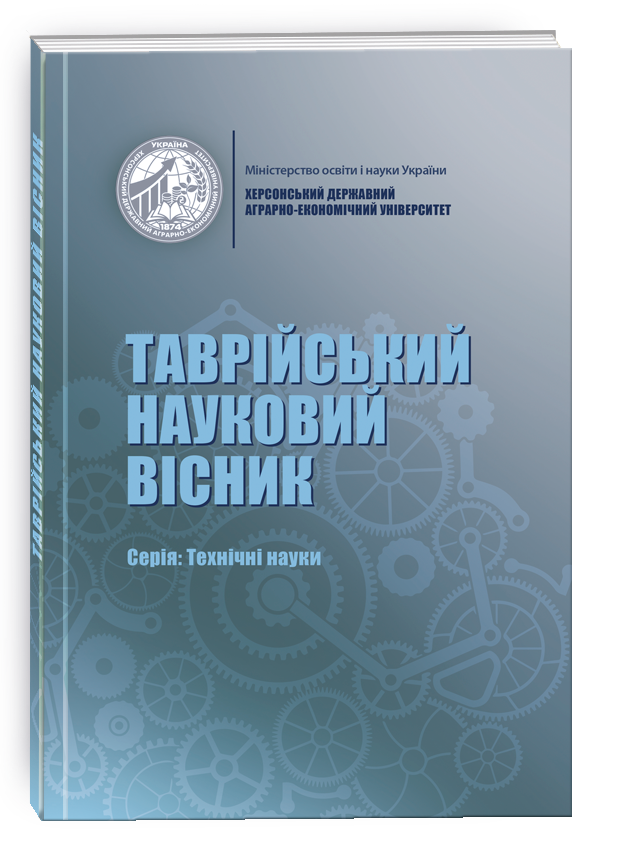SENSORY INDICATORS OF THE QUALITY AND SAFETY OF THE DESIGNED COMBINED MEAT PATES
DOI:
https://doi.org/10.32782/tnv-tech.2023.3.9Keywords:
pate, chicken meat, liver, turkey meat, vegetable raw materials, organoleptic indicators, microbiological indicators.Abstract
In conditions of protein deficiency, one of the fastest and most effective ways to solve the problem is to replace animal meat with poultry meat and offal, as well as components of plant origin. With appropriate fattening, the nutritional value of chicken meat does not significantly differ from beef and pork. There is no shortage of essential amino acids. The vitamin and mineral composition is similar. The content of connective tissue in it is less than in any meat of terrestrial animals and is no more than 8%. Poultry meat is a tasty, nutritious (94-96% digestible) and at the same time low-calorie product. It is a source of high-quality, easily digestible proteins (19–22%), amino acids, vitamins, and minerals, which are indispensable materials for the formation and functioning of the body. It is a source of high-quality, easily digestible proteins (19–22%), amino acids, vitamins, and minerals, which are indispensable materials for the formation and functioning of the body. The lipids of chicken and turkey meat contain more polyunsaturated fatty acids (PUFA), which are not synthesized in the human body and are therefore indispensable food ingredients. The work is devoted to the justification of the use of poultry meat, offal and vegetable ingredients in the technology of preparing meat dishes for special purposes. The results of the organoleptic evaluation show that the addition of vegetable components in a total amount of 20% (10% each of apples and carrots) to meat raw materials is the most optimal, and this trend is preserved both in the combined pate of chicken meat and liver and of turkey meat and liver. The combination of meat and poultry liver with vegetable raw materials (carrots, apples, pumpkin seeds) allows you to reduce the caloric content, and at the same time, the content of cholesterol and unsaturated fatty acids. At the same time, the resulting dish is enriched with natural biologically active substances, vegetable proteins, carbohydrates, vitamins, minerals, ballast substances and other compounds necessary for the normal functioning of the human body.
References
Інноваційні технології харчової продукції функціонального призначення: монографія. Частина 1 / За ред. О.І. Черевка, М.І. Пересічного – 4-те вид., переробл. та допов. Х.: Харківський державний університет харчування і торгівлі, 2017. 940с.
Симахина Г.А. Социальные и экономические предпосылки создания в Украине индустрии здорового питания. Продукты & ингредиенты. 2014. № 3. С. 26–29.
Цехмістренко С.І., Цехмістренко О.С. Біохімія м’яса та м’ясопродуктів: навч. посібник. Біла Церква, 2014. 192 с.
Маслійчук О.Б., Паска М.З. М’ясні посічені напівфабрикати з використанням натурального білкового збагачувача. «Оздоровчі харчові продукти та діє-тичні добавки: технології, якість та безпека»: мат. міжнар. наук.-прак. конференції (25–26 травеня 2017р), м. Київ. К.: НУХТ, 2017. С. 30–32.
Нечепуренко К.Б., Пивоваров П.П. Технологічні аспекти утворення структурованих емульсій у складі м’ясних січених виробів. Восточно-Европейский журнал передовых технологий, 2(12 (68)) (2014).
Стіборовський, С. Е., Сімакова, О. О., Слащева, А. В., Нефедов, Ю. О. Наукове обґрунтування використання вторинної сировини в технологіях функціональних добавок для січених виробів. Обладнання та технології харчових виробництв (32), 2014. С. 92-100. 7. Гречко В.В., Страшинський І.М., Пасічний В.М. Харчові волокна як функціональний інгредієнт у м’ясних напівфабрикатах. Технічні науки та технології. 2019. №. 2 (16). С. 154-164.
Стріха Л.О., Підпала Т.В., Сморочинський О.М. Оцінка впливу технології виробництва на показники м’ясних січених заморожених напівфабрикатів. Вісник Сумського національного аграрного університету. Серія: Тваринництво. 2017. №. 7. С. 216-219.
Новаковська В.Ю. Фізико-хімічні показники м’яса свиней при введенні до раціону целюлозоамілолітичної кормової добавки. Науковий вісник Львівського національного університету ветеринарної медицини та біотехнологій імені С.З. Ґжицького. 2015. № 3. С. 246-250.
Margit DallAaslyng, Christian Vestergaard, AnetteGranly Koch The effect of salt reduction on sensory quality and microbial growth in hotdog sausages, bacon, ham and salami. Meat Science, 2014, vol. 96, 1, 47–55.
Сирохман І.В. Наукові досягнення щодо поліпшення технології і складу м'ясних продуктів. Вісник Львівського торговельно-економічного університету. Технічні науки № 20. 2018. С. 35-40.
Пелих В.Г., Ушакова С.В., Сахацька, Є.А. (2020). Використання харчової клітковини у технології січених м'ясних напівфабрикатів. Наукові доповіді НУБіП України, 0(5(87)). doi:http://dx.doi.org/10.31548/dopovidi2020.05.009
Стіборовський С. Е., Османова Ю.В. Дослідження мінерального складу паштетів печінкових з використанням пребіотиків. Актуальні проблеми та перспективи розвитку харчових виробництв, готельно-ресторанного та туристичного бізнесу: тези доповідей Міжн. наук.-прак. конференції (20–21 листопада 2014 р), м. Полтава, 2014. С. 26.
Gonzlez B., Arca B. Mayo J. Surez E. Detection, purification and partial characterization of plantaricin C, а bacteriocin produced by a Lactobacillus plantarum strain of dairy origin B. Gonzlez, P. Applied and Environmental Microbiology. 2014. Vol. 60, № 6. P. 2158-2163.
Vogel R.F., Pohle B.S., Tichaczek P.S., Hammes W. P. The Competitive аdvantage of Lactobacillus curvatus LTH 1174 in sausage fermentations is caused by formation of curvacin A Systematic and Applied Microbiology. 2013.Vol. 16, № 3. P. 457-462. doi:10.1016/s0723-2020(11)80280-8.







